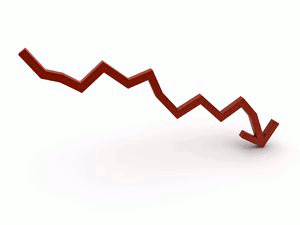Bond Prices
Bond prices and yields move in opposite directions
 When a bond is first sold as a part of a new issue, its price is fixed. From then on, the price of a bond moves up or down in relation to changes in interest rates. When interest rates rise, the price of a bond goes down because its coupon rate (the fixed, periodic payment) becomes less desirable than the higher rates of newly issued bonds of a similar quality. If interest rates fall, the bond's coupon rate becomes more attractive to investors, which drives up the price. If the yield to maturity (i.e the rate at which the bond could be sold in the secondary market) is greater than the coupon rate the bond will sell at a discount to its issue price. If the yield to maturity is less than the coupon rate, the bond will sell at a premium to its issue price.
When a bond is first sold as a part of a new issue, its price is fixed. From then on, the price of a bond moves up or down in relation to changes in interest rates. When interest rates rise, the price of a bond goes down because its coupon rate (the fixed, periodic payment) becomes less desirable than the higher rates of newly issued bonds of a similar quality. If interest rates fall, the bond's coupon rate becomes more attractive to investors, which drives up the price. If the yield to maturity (i.e the rate at which the bond could be sold in the secondary market) is greater than the coupon rate the bond will sell at a discount to its issue price. If the yield to maturity is less than the coupon rate, the bond will sell at a premium to its issue price.
The longer the maturity of a bond, the greater its price will be affected by changes in interest rates. For example notice what happens to the price of these different bonds when interest rates fall from 6% to 5.5%.
| 6.00% YTM* |
5.50% YTM* |
5.00% YTM* |
|
| 2 yr bond, 6% coupon | 100.00 | 100.93 | 101.88 |
| 10 yr bond, 6% coupon | 100.00 | 103.80 | 107.79 |
Clearly the further away the maturity date is the greater inpact a change in interest rates will have on it's price.
Investors can make capital gains (and losses) on bonds just as they can on shares by trading on these movements in price.
- Last updated on .